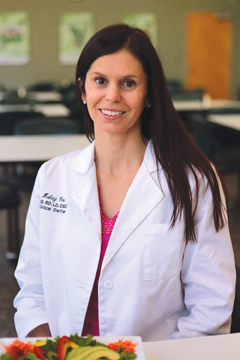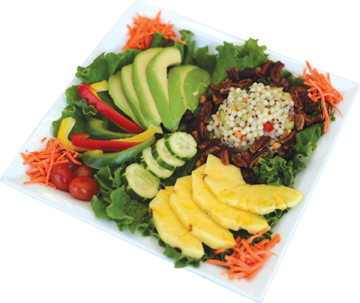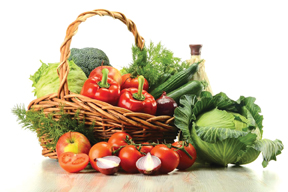Eating More Plants Is A Smart Plan
You don’t have to be vegetarian to benefit from a more plant-based diet
For Jignesh Dholaria, MD, it wasn’t hip or trendy. He didn’t learn about it from Hollywood stars or even Oprah. It was simply a way of life.
“I actually did not choose to become a vegetarian,” Dholaria says. “It
was what I have grown up since I was born. Both of my parents and the majority of my family are vegetarians.”

However, as a physician at St. Joseph's/Candler Primary Care located in Pooler, Dr. Dholaria knows why others may choose to either eliminate, or at least reduce, their red meat and processed food intake in favor of more fruits and vegetables.
“There are multiple benefits for a person who adopts a plant-based diet,” Dholaria says. “First of all, it can help you lose weight. But also some studies have shown that people who eat plant-based foods have a lower risk of several
conditions including heart disease, high cholesterol, type 2 diabetes and high blood pressure.”
There are many different types of beneficial diets that people can try, such as the Mediterranean diet, semi-vegetarian (also known as
flexitarian), vegetarian, or even vegan (no animal products whatsoever), but he also reminds patients that there is no perfect diet to begin with.
“Everyone’s body is different,” Dholaria says.
Where To Begin?
Adding more plants to your diet does not have to be a scary leap into the unknown, nor do you have to give up all of the tasty meals you love. Haley Cox, a clinical dietitian at St. Joseph’s/Candler, recommends small steps.

“You don’t have to cut meat out cold turkey,” Cox says with a laugh. “You could start with something like a ‘Meatless Monday’ and try some good plant-based protein sources such as beans, nuts and nut butters, edamame,
tofu, or hummus. These sources are great for snacks or to add to a salad or main dish.”
Whole grains are also encouraged in a plant-based diet, and Cox recommends gradually replacing the white-flour breads and pastas with 100
percent whole-grain products.
Boxed foods and frozen meals, even if meatless, are generally not recommended. In order to be consistently satisfying to the taste and to look better and last longer on the grocery shelves, processed
foods often contain more saturated and trans fats, sodium, and added sugars. Fresh fruit and vegetables are naturally free of these unhealthy ingredients.
“The taste difference will likely be the biggest adjustment when adapting
to a plant-based diet,” Cox admits. But eating can still be pleasurable.
“Adding fresh herbs and spices will help provide flavorful dishes,” Cox says. “Also, try new foods more than once, you may grow to love them.”

Seeing The Difference
“An individual following a plant-based diet will likely see an improvement in cholesterol and triglyceride levels within a few months,” Cox says. “Glycemic control may also improve.”
Not only could you see a decrease
in your waist-size with a more plant-based diet, you may also see a decrease on the amount of money you have to spend on food.
“The cost would depend on the type of diet that is chosen, but it may be cheaper than a meat-based diet,”
Dholaria says. Cox agrees.
“Your grocery bill will likely decrease as you purchase less meat,” she says. To keep things even more economical, Cox recommends buying fruits and vegetables when they are in season or getting the
frozen options (which are not the same as the frozen meals that tend to contain large amount of sodium and added sugar).
As incorporating more plants into your diet becomes habit, you may even feel more adventurous.
“People
always wonder about variety,” Dr. Dholaria says. “But you would be amazed by the different variety of foods that can be cooked.”
The Really Fresh Market
As plant-based (and organic) diets grow in popularity, farmers markets are sprouting up more and more in towns and cities across the country. But this new way of shopping can make some people feel like amateurs.
“Going to a farmers market
can be overwhelming,” says clinical dietitian Haley Cox. “But it is a great way to get locally grown items at the peak of the season.”
Cox offers a few tips for getting the most from your farmers market:

- Plan Meals Ahead of Time. Take a list of items you will need for your weekly menu and shop accordingly

- Go Early or Go Late. Markets tend to be less crowded right when they open or just before they close. But for the best selection, get there early.
- Know Your Seasons. If you know what to expect when arriving, making decisions is much easier.
- Bring Big Bags & Small Change. Make sure your purchases make it home safely with your own sturdy bags. Also, purchases will be faster if you have exact change
- Keep It Simple. You are purchasing ultra-fresh produce; let its natural flavor shine when you cook it. Keep preparations simple.